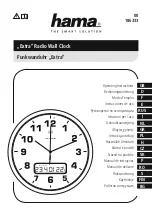
18 92478_UM_ SART_ F
5
OPERATION INSTRUCTIONS
5.1
Activating the Tron SART
1.
Break seal at switch.
2.
Pull locking pin and make sure that the switch enters the “ON” position. An audible “BEEP” will
be heard and the indicator led will start to flash.
3.
Place (or hold) the transponder in a vertical position as high as possible. When the Tron SART is
within range of an active 3 cm radar, the internal loudspeaker will be activated. A handheld VHF
radio should now be used to establish contact with the approaching boat or helicopter.
5.2
Deactivating the Tron SART
1.
Move the switch to the “OFF” position.
2.
Replace the locking pin.
5.3
Test of the Tron SART
Test of the Tron SART is done using the ships own 3 cm radar. The radar display will show different
patterns depending on the range to the transponder.
See Figure 2, Figure 3, and Figure 4 for details of the radar display. Note that the examples shown are
typical and will vary with the radar performance (height, power output and sensitivity).
With the transponder located close to the radar the signals will appear as rings on the radar display.
The rings may be broken in some sectors, depending on ship construction and other obstacles, and does not
indicate an error in the transponder.
Placing it further away will reduce the signals to 12 dots on the radar display, showing
the direction to the transponder.
1.
Hold the switch on the Tron SART in the “TEST” position.
2.
Simultaneously a person should observe the radar display to check for correct pattern.
The radar should be set for a 10 nm range.
3.
The test should preferably be done in open sea to avoid interference on the radar display from
land echoes.
4.
Alternatively, a radar of a nearby ship can be used to test the transponder. A ship to ship vhf
channel should then be used to confirm operation.
Summary of Contents for Tron SART
Page 1: ...92478_UM_ SART_F 1...
Page 24: ...24 92478_UM_ SART_ F...







































